Warfighter Interviews
Warfighter Interviews
Lieutenant Commander Arnold "Mike" Granat, USN (ret)
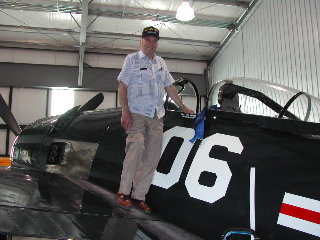 In our nine years of doing business on the Internet, we recognize that we sometimes cross paths with people we might never rub elbows with in real life. Several years ago, Robert Morgan, the pilot of the famed B-17 Flying Fortress 'Memphis Belle', turned to us to purchase a replica of his aircraft offered by The Franklin Mint. At the time, we had the opportunity to talk with him at length but declined to do so, perhaps out of timidity and quite possibly from fear of speaking with someone possessing such a storied past. Instead, we offered to sell some of his signed autobiographies, which were instantly gobbled up by fellow aviation enthusiasts. Shortly thereafter, we learned from his wife that Mr. Morgan slipped and fell near his home, and in a matter of a few weeks, passed away, never to regain consciousness. We vowed never to repeat the same mistake twice, especially since many of these veterans are now well past their prime and may not be able to recollect their wartime events with utmost certainty.
In our nine years of doing business on the Internet, we recognize that we sometimes cross paths with people we might never rub elbows with in real life. Several years ago, Robert Morgan, the pilot of the famed B-17 Flying Fortress 'Memphis Belle', turned to us to purchase a replica of his aircraft offered by The Franklin Mint. At the time, we had the opportunity to talk with him at length but declined to do so, perhaps out of timidity and quite possibly from fear of speaking with someone possessing such a storied past. Instead, we offered to sell some of his signed autobiographies, which were instantly gobbled up by fellow aviation enthusiasts. Shortly thereafter, we learned from his wife that Mr. Morgan slipped and fell near his home, and in a matter of a few weeks, passed away, never to regain consciousness. We vowed never to repeat the same mistake twice, especially since many of these veterans are now well past their prime and may not be able to recollect their wartime events with utmost certainty.
Having said that, we initially failed to put two and two together when flying ace Arnold 'Mike' Granat came knocking at our online door to order a copy of his 1:72 scale warbird recently released by SkyMax Models. Fortunately, his request came with a short note attached indicating that he was the pilot of the plane in question and was looking forward to its imminent release with great delight. Needless to say, we jumped at the opportunity to press him on his wartime experience and perhaps provide everyone with a more insightful glimpse into his aviation exploits.
What follows is a short interview with this brave naval aviator who, at a time when his country called upon him to help defend our nation against tyranny and aggression, stepped up to the plate to stare down a global menace from the cockpit of a frontline fighter and belly of a blackened flying boat.
The Motor Pool (TMP): Mike, could you tell us about your background and why you decided to join the US Navy?
Mike Granat (MG): I was raised in Southern California and captivated by flight from an early age. As I soon discovered, few things could keep me from thinking about flying or out of the air for long. As a boy, I built all types of aircraft models from the balsa wood, tissue paper and dope types, to gas powered flyers. At the age of sixteen, this passion of mine led to flying lessons in a Taylorcraft at Mine's field in L.A., which is now an enhanced airport called L.A. (LAX) International. In high school, my homeroom teacher turned out to be a reserve Naval Aviator. His stories were instrumental in sending me on the path to becoming a fellow aviator in the US Navy.
TMP: What types of aircraft did you fly during your tenure in the service?
MG: Where do I begin? For openers, I enlisted in the US Navy on November 16th, 1939. I was sent to Aviation Machinist Mate School, which is located at NAS North Island in San Diego, California. Afterwards, I was shipped off to the east coast so that I could attend the Aircraft Instrument School, based at the Naval Aircraft Factory in Philadelphia, PA. I was then sent south for Navy Flight Training at NAS Pensacola, FL in 1943 where I became a naval aviator and flight instructor. After my tenure in the service, I retired with the rank of Lieutenant Commander USN from NAS Moffet Field in California on December 30th, 1959.
What follows is a comprehensive list of the aircraft I've flown while in the service and in civilian life.
Military Qualified / Civilian Certified:
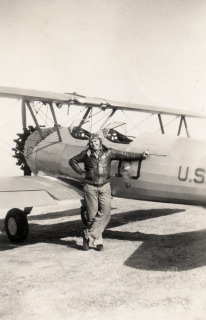 Piper J3 Cub
Piper J3 Cub
- For me, this was the beginning. My first lessons occurred at age 16 in 1936 at Mine's Field now more familiarly known as Los Angeles Int'l (LAX).
N2S Stearman Kadet (also called "Yellow Peril")
- Flight training at NAS Dallas, TX, March 1943
Vultee SNV (Vibrator)
- Monoplane checkout and formation training, Saufley Field, Pensacola, 1943.
North American SNJ Texan
- Instrument training in a 'hooded' rear seat. Whiting Field, Pensacola, 1943.
Beechcraft SNB-1
- Multi-engine checkout and training. Corry Field, Pensacola I graduated on October 23rd, 1943 earning the coveted 'Wings of Gold'.
Lockheed PBO Lodestar/ PV-1 Ventura
- Operational flight training in fleet type aircraft (attack bomber). Upon completion, I was retained as a Flight Instructor at Lake City, Florida from 1943-1944.
Martin JM-1 Marauder
- Instructors were rotated to fly target tows for turret gunner students in the PV-1's. This was conducted off the coast of South Carolina near Beaufort.
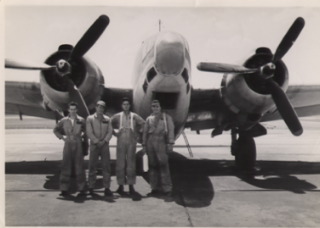 Howard GH-1 / Beechcraft GB-1 (Staggerwing)
Howard GH-1 / Beechcraft GB-1 (Staggerwing)
- These were the 'personal' aircraft of the Commanding Officer at Lake City. He rarely flew them so we took it upon ourselves to see that they were 'properly exercised' from time to time (great cross country aircraft for week-end boondoggles).
Grumman F4F /FM-2 Wildcat
- Carrier Fighter/ Night fighter training followed with Carrier Qualifications. Took place at Sanford/Deland, Florida in 1945.
Grumman F6F Hellcat with later transition to the Grumman F8F Bearcat
- Carrier operations with Fighting Squadron 3 ('Felix the Cat' Insignia) -1945-46.
Air Development Squadron 2 (VX-2) NAS Chincoteague VA -1947
The following aircraft made up the inventory list for the squadron:
Grumman TBF/TBM Avenger - used as 'mother' radio controller for the Culver TD2C (a pilot-less target drone for fleet gunnery exercises).
Grumman F7F Tigercat - 'mother' radio controller for the Grumman F6F-5 K Hellcat (converted to pilot-less target drone for fleet exercises). Both target drones required pilots during the initial checkout after the conversion process just in case they didn't respond to radio commands from the 'Mother'. There could be some wild rides if the aircraft had a mind of it's own.
Consolidated PBY-5A Catalina - used to drop a pilot-less jet powered KDN target drone. This was radio-controlled by the F7F Tigercat.
Douglas JD-1 Invader - this aircraft was used as a target tow aircraft. Both the JD-1 & the JM-1 Marauder were painted a bright insignia yellow to distinguish their roles as tow aircraft and not the intended target.
Douglas R4D (DC-3) Transport. - This was used to transport personnel and supplies between test sites.
Beechcraft JRB (D-18) - a small (eight-passenger) transport for utility work.
Navy 5 -Term College Program at University of Cal - Los Angeles - 1948-49
- During this program, I acquired the necessary flight time at NAS Los Alamitos in the F6F, TBM or JRB.
Naval Post-Grad School - Monterey, 1950.
- A few aircraft were maintained at the Monterey Municipal airport for flight time. Again, F6F's for those of us who were fighter-qualified, or a JRB or SNJ for those not.
 at NAS Chincoteague.jpg) U.S.S.Saipan CVL-48 - 1951-52
U.S.S.Saipan CVL-48 - 1951-52
While assigned as a Flight Deck Officer and when at sea, we took an SNJ with a tail hook to acquire flight time for ship's company aviators (those not assigned to a squadron). When in port, we had a JRB at our disposal. On extended deployments, (6th Fleet/Mediterranean. etc) those (shipboard) aviators not carrier-qualified would get their time in the rear seat of the SNJ. - 1951-52.
Fleet Airborne Electronic Training Squadron (FaeTuLant) - 1953-54
Lockheed P2V-3W Neptune - this was used for fleet anti-submarine training for squadron personnel from anti-sub squadrons. During hurricane season, the aircraft, because of it's super radar capability (200 mile range), would be called upon as Hurricane Hunters, since there were no satellites back then.
R4D's - a fleet of 12 configured as airborne radar classrooms.
PBY-5A - used for night searchlight training as part of the anti-sub work.
F6F's and TBM's as "targets" for radar intercept exercises.
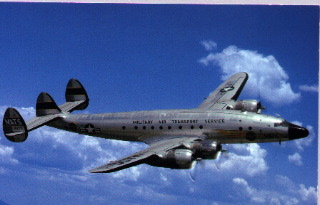 Naval Air Tech Training School - NAS Miramar - 1955-56
Naval Air Tech Training School - NAS Miramar - 1955-56
Officer-in-Charge (OinC) - The school trained fleet personnel in troubleshooting and maintenance of various carrier aircraft in current use or anticipated use. Also had several flight simulators for pilot checkout before being assigned to fleet squadrons. The station had a JRB for station pilots. They later received an R4D-8 (Super DC-3). Having Plane Commander certification from previous duty stations in the R4D, I was asked to help out on administrative flights for the Naval District until several pilots were checked out. Most of the flights were to other Naval Districts on the coast with some extended flights to Washington D.C. As C.O. of the school I felt it necessary to become familiar with what we taught so I took courses in all the simulators and subsequently checked out in the corresponding aircraft as follows:
Lockheed TV-2 Shooting Star - my first jet
Grumman F9F-5 Panther - straight wing model
Grumman F9F-6 Cougar - swept wing model
McDonnell F2H-2 Banshee - twin jet engines
I had only a few hours in each
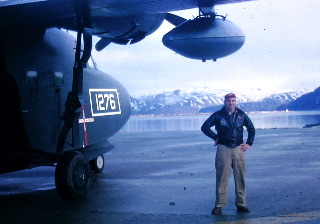 Grumman UF-1 Albatross - Naval Station Adak, Alaska, 1956-57.
Grumman UF-1 Albatross - Naval Station Adak, Alaska, 1956-57.
- Officer-in-Charge of the Naval Air Facility and Air/Sea rescue operations. Also provided service flights for the Naval Aerological station on the island of Attu and an automatic weather station at Amchitka . Also, I served as medical support for the Aleut natives on Atka - transportation for the Fish and Wildlife Service and contractor personnel working at various outposts.
Lockheed R7V Super Constellation 1049-G - NAS Moffett Field, 1957-59.
VR-7 Military Air Transport services (Navy), passengers and cargo, from California to the various Pacific Islands, Philippines, Japan, Okinawa, Thailand, Saigon, Calcutta, New Delhi and Karachi with turnaround at Dhahran, Saudi Arabia. We had a fleet of 24 aircraft with most on scheduled flights at any one time.
The above list does not include the 2500+ hours I spent in the PBY-5 as a flight engineer and gunner during 1940 -41 in the Pacific and all of 1942 in the Southwest Pacific in combat operations against Japanese naval and air forces.
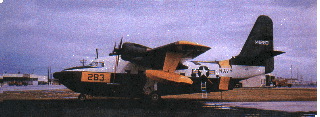 Civilian Aircraft:
Civilian Aircraft:
Did charter work for a year for a Cessna dealer out of the Monterey Bay Area. Duties involved demo flights for potential customers, some instruction and transporting clients to various destinations such as San Francisco, Oakland, Reno and others. Aircraft involved were:
Cessna 150
Cessna 172
Cessna 337 Skymaster - a twin-engine w/centerline thrust (also called the Mixmaster)
Cessna 310 Twin
Piper Twin Apache
Beechcraft Debonaire
TMP: Whew. Quite a list of aircraft you mastered. Which aircraft was the easiest to fly and which was the most difficult?
MG: The PBY Catalina was probably the hardest. There was no 'boost' for the flight controls - it was almost like driving a Mack truck. Also, there were no flaps, which ordinarily provide a little more stability on landings. Otherwise, it was a great aircraft.
The Stearman N2S was the easiest. It was a robust biplane, with simple flight controls and an intuitive instrument layout. It could take as much rough acrobatic treatment as you could put into it.
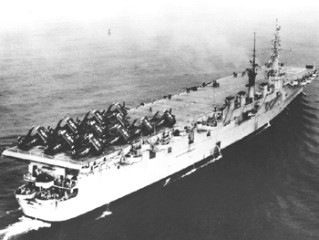 TMP: Could you describe your experience landing on an Essex class aircraft carrier?
TMP: Could you describe your experience landing on an Essex class aircraft carrier?
MG: Not knowing any other type of carrier except the 'Jeep' (escort carrier), the wooden, straight deck of the Essex class was commonplace. Since aircraft had to be parked forward, the barriers were the only safety factor in keeping landing aircraft from colliding with them. Unlike present day carriers, with long angled decks, the landing area on the Essex was restricted to the aft third of the ship. A long landing could put you into the barriers requiring an engine and prop change.
TMP: What was your combat record during World War II?
MG: When the Pacific war started, I was just returning to VP-14 at Kaneohe Bay, Hawaii from a temporary stateside assignment. With six PBY aircraft, we headed for the South Pacific where we joined up with a New Zealand and Australian PBY outfit operating out of New Caledonia. Our daylight patrols had us 'nibbling' at the forward units of Japanese forces although encounters were hazardous as the PBY was no match for many of the enemy aircraft.
With a need to move from a defensive posture to one of aggressive attacks on all of the foe's assets; troop transports, supply ships and even warships, yet still operate in a protective environment, a new, bold concept was born - we would take into our fold a new ally - the cloak of darkness.
Flying at low altitudes, primarily on instruments, over a strange and forbidden 'wilderness' and in most cases, at a distance from friendly territory wasn't the most ideal solution. The tactic, however, seemed to be the only way to survive. So, despite the inherent dangers, we had to take that risk. From this concept a new term was coined for this change of genre; the 'Black Cats' were born and the game plan took a dramatic new direction.
To reduce our physical presence, some of the aircraft were painted a flat black, and they assumed a stalking, 'cat-like' role, mimicking that of their namesakes. With greater improvements in radar, we could more safely prowl the night sky, snooping into harbors and estuaries, looking for telltale shadows or identifying new activities. Silent and stealthy, reducing engine power to a whisper, and with a dive/gliding approach in a near-invisible aircraft, mission results quickly became more successful. The docile, daytime 'Cat' had become a new creature of the night: a slinking, black, night fighter raising hell through the back alleys of the South Pacific.
Our high altitude bombsights were of no use so 'seat-of-the pants' flying and 'seaman's eye' became the standard methods for our attacks. Each crew concocted makeshift 'bomb sight' devices to better place their bomb loads. Because of the low altitude strikes and to keep from blowing ourselves out of the skies, bombs with delayed action fuses were necessary to escape the deadly effects of the bomb blasts. As a result, it wasn't until the bombs had detonated, that the enemy had any idea we had been there. As quietly as we had arrived, we would disappear into the night without a trace, the engine sounds muffled by the exploding bombs trailing behind. It must have become very disconcerting not knowing when or where the 'Cats' would strike and bewildering as to where these night raiders were coming from.
In the months that followed, our tactics became more creative and the raids bolder, with the 'Cats' inflicting an ever-increasing toll on enemy resources. Some of our raids reached out as far as two thousand mile round trips. At the same time, we were seeing a substantial reduction in our own losses. More and more aircraft and crews began to arrive in our theater of operations. Missions became more resourceful with nighttime torpedo and bomb attacks on not only troop transports and supply ships, but also against some of the larger warships now considered targets of opportunity. Results began exceeding our greatest expectations as the list of sunken Japanese tonnage grew.
These night attack operations were to eventually result in the PBY's sinking or disabling hundreds of thousands of tons of cargo vessels, troop transports, and even warships - more enemy ships than any other single type of aircraft during all of World War II. Despite resounding successes, a heavy price was paid: our efforts resulted in the loss of 98 squadron mates who died in combat and 35 others in the line of duty.
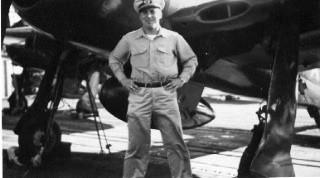 TMP: How did you feel about the planned invasion of Japan in late 1945?
TMP: How did you feel about the planned invasion of Japan in late 1945?
MG: I never gave much thought to the planned invasion of Japan. Our area of interest was what was before us and in getting the job done. With the June '42 victory at Midway and the acquisition of Guadalcanal in the Solomon Islands in August '42, we began to feel we could win the war.
TMP: What was your impression of the Grumman F8F Bearcat?
MG: When the war ended in the Pacific, Fighting Squadron Three (VF-3) returned to the States, settling in at the Oceana Naval Air Station outside of Virginia Beach. Still flying our war-weary F6F Hellcats, we conducted our daily routines maintaining fighter proficiency. In early 1946, we got the word we would replace the F6F's with the new F8F Bearcats. Excitement became rampant. The Grumman factory invited the squadron to come to Bethpage, New York, and check out the new 'machine'. There, we were treated to a spectacular show conducted by Grumman's Chief Test Pilot. We were smitten! Shortly thereafter, we started taking delivery on the new fighter.
If there was ever an aircraft that could be called the 'super' fighter, it was the Bearcat, which was produced as a replacement for it's legendary predecessor, the F6F Hellcat. 'Biggest engine, least airframe' was the motto used by Grumman as they drew up the lines for this mighty machine. One of the largest engines available, the Pratt and Whitney R-2800, a 2100 hp powerhouse was selected. Instead of finding an engine for the airframe, the engineers built an airframe for the engine. When the prototype was completed and flown in August 1944, the results were phenomenal. It was the Navy's ultimate piston-engine fighter; a small super-powered chunk of dynamite that was extremely agile and the hottest thing in the sky. It could fly circles around any other aircraft including the P-51 Mustang, P-47 Thunderbolt, F4U Corsair and even the early jets. Considered the greatest 'dog fighter' of its time, it performed superbly from the straight flight decks of the Essex-class carriers scrambling into the air with incredible short takeoffs then leaping skyward in near vertical ascents. Carrier pilots loved it and would gladly show its' performance at any opportunity.
With the establishment of a delivery team, we traveled to the factory to take delivery on the new squadron acquisitions. With no military markings except for some "whitewash" numbers on the nose, any military aircraft on the return was fair game for a pass or two.
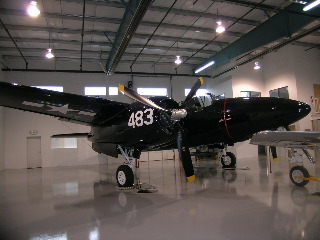 Comparing the combat handling qualities of the Bearcat with the older Hellcat was an interesting process. The Bearcat was a very responsive aircraft - so responsive that the same control pressures used in the F6F during combat type maneuvers found us over controlling in the F8F. After hitting progressive stalls at 300-400 knots, we realized that the short control stick design was a clue to lay it on gently. It was not the stable aircraft the F6 was. The F6 could be trimmed for hands off flight but not the F8. It had to be flown all the time. Carrier approaches required delicate control movement and tail first landings were a must. With a twelve-and-a-half foot prop and 2100 horses 'under the hood', a carrier wave off for being too slow required judicious application of power. The 'Panic' throttle could result in a torque roll flipping the aircraft on it's back with survivability rather slim.
Comparing the combat handling qualities of the Bearcat with the older Hellcat was an interesting process. The Bearcat was a very responsive aircraft - so responsive that the same control pressures used in the F6F during combat type maneuvers found us over controlling in the F8F. After hitting progressive stalls at 300-400 knots, we realized that the short control stick design was a clue to lay it on gently. It was not the stable aircraft the F6 was. The F6 could be trimmed for hands off flight but not the F8. It had to be flown all the time. Carrier approaches required delicate control movement and tail first landings were a must. With a twelve-and-a-half foot prop and 2100 horses 'under the hood', a carrier wave off for being too slow required judicious application of power. The 'Panic' throttle could result in a torque roll flipping the aircraft on it's back with survivability rather slim.
Acceleration was a celebrated feature. The record of 99 seconds from a standing start to 10,000’ stood for many years. Later, a modified version was to set a piston-engine speed record of 528 mph, which still stands today.
The Bearcat was probably my most favored aircraft of the thirty I have flown during a career spanning 20+ years. Only the F7F Tigercat came close.
TMP: You must be incredibly proud that SkyMax Models decided to use your aircraft as the basis for their inaugural replica. What did you think when you first heard about the planned offering?
MG: Yes, I was amazed and incredibly proud to hear of the upcoming F8F diecast model. The word came to me from Bill Anders, Brigadier General, USAF (ret), an Apollo 8 astronaut who has an aviation museum in Bellingham, WA. (www.heritageflight.org) He has a flyable F8F Bearcat and I have had some old memories revived around that wonderful machine. My granddaughter is an assistant to the museum director and keeps me up to date on museum events.
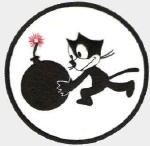 TMP: What's the significance of having the 'Felix the Cat' logo painted on the side of your aircraft?
TMP: What's the significance of having the 'Felix the Cat' logo painted on the side of your aircraft?
MG: Felix has been the proud insignia of VF-3 since 1929. He has adorned the squadron aircraft from the early biplane fighters (F3F, F4B-4) through the Grumman parade (F4F, F6F, F8F, F9F series and the long serving F-14 Tomcat) 'Felix' still flies today with the F-18 Super Hornet. Butch O'Hare was a celebrated member of the squadron. His exploits earned him the Congressional Medal of Honor. Chicago's O'Hare airport was dedicated to him. Felix was the creation of Otto Messmer, an animator on the early cartoon films. In the early 20's, his boss asked him to create a cartoon character for a silent movie. So, on a drawing board in his attic, Felix the Cat was born.
TMP: There's been some discussion regarding the wing dihedral on the SkyMax Models replica F8F Bearcat. To your trained eye, does the plane look correct from every vantage point?
MG: The dihedral, as far as I'm concerned, looks just fine. I feel there has been too much wasted discussion on that fact. I'm sure the bloggers have better things to do.
TMP: Were there any particular aerial engagements that stand out compared with your other missions?
MG: Overlapping patrols resulting in two separate engagements with the Kawanishi 97 (Mavis) Japanese four-engine flying boat. It was a case of two lumbering giants circling each other like boxers in a ring taking 'pot shots' with both disengaging after a brief fray with minor damage.
 TMP: What were some of the technical changes found in the Bearcat that were not available on previous aircraft you flew?
TMP: What were some of the technical changes found in the Bearcat that were not available on previous aircraft you flew?
MG: The AERPROP, a totally self-integrated propeller was one. The bubble canopy was a blessing with unobstructed vision all-around. And, of course, the primary asset was a lightweight airframe with a powerful engine that gave the aircraft its superb performance, particularly in the areas of agility, climb, and speed.
TMP: Do you still keep in touch with former members of VF-3?
MG: I have had no contact with VF-3 pilots in recent years. There were reunions in the past but most of us 'ole timers' are history.
TMP: Mike, thank you for taking the time to reflect on your experiences as a naval aviator. I'm sure that our fellow collectors would like to extend the same heartfelt thanks we're offering you for serving our nation so faithfully in our darkest hour of need...posted 1/17/2009





 In our nine years of doing business on the Internet, we recognize that we sometimes cross paths with people we might never rub elbows with in real life. Several years ago, Robert Morgan, the pilot of the famed B-17 Flying Fortress 'Memphis Belle', turned to us to purchase a replica of his aircraft offered by The Franklin Mint. At the time, we had the opportunity to talk with him at length but declined to do so, perhaps out of timidity and quite possibly from fear of speaking with someone possessing such a storied past. Instead, we offered to sell some of his signed autobiographies, which were instantly gobbled up by fellow aviation enthusiasts. Shortly thereafter, we learned from his wife that Mr. Morgan slipped and fell near his home, and in a matter of a few weeks, passed away, never to regain consciousness. We vowed never to repeat the same mistake twice, especially since many of these veterans are now well past their prime and may not be able to recollect their wartime events with utmost certainty.
In our nine years of doing business on the Internet, we recognize that we sometimes cross paths with people we might never rub elbows with in real life. Several years ago, Robert Morgan, the pilot of the famed B-17 Flying Fortress 'Memphis Belle', turned to us to purchase a replica of his aircraft offered by The Franklin Mint. At the time, we had the opportunity to talk with him at length but declined to do so, perhaps out of timidity and quite possibly from fear of speaking with someone possessing such a storied past. Instead, we offered to sell some of his signed autobiographies, which were instantly gobbled up by fellow aviation enthusiasts. Shortly thereafter, we learned from his wife that Mr. Morgan slipped and fell near his home, and in a matter of a few weeks, passed away, never to regain consciousness. We vowed never to repeat the same mistake twice, especially since many of these veterans are now well past their prime and may not be able to recollect their wartime events with utmost certainty.
 Piper J3 Cub
Piper J3 Cub Howard GH-1 / Beechcraft GB-1 (Staggerwing)
Howard GH-1 / Beechcraft GB-1 (Staggerwing) at NAS Chincoteague.jpg) U.S.S.Saipan CVL-48 - 1951-52
U.S.S.Saipan CVL-48 - 1951-52 Naval Air Tech Training School - NAS Miramar - 1955-56
Naval Air Tech Training School - NAS Miramar - 1955-56 Grumman UF-1 Albatross - Naval Station Adak, Alaska, 1956-57.
Grumman UF-1 Albatross - Naval Station Adak, Alaska, 1956-57. Civilian Aircraft:
Civilian Aircraft: TMP: Could you describe your experience landing on an Essex class aircraft carrier?
TMP: Could you describe your experience landing on an Essex class aircraft carrier?
 TMP: How did you feel about the planned invasion of Japan in late 1945?
TMP: How did you feel about the planned invasion of Japan in late 1945?
 Comparing the combat handling qualities of the Bearcat with the older Hellcat was an interesting process. The Bearcat was a very responsive aircraft - so responsive that the same control pressures used in the F6F during combat type maneuvers found us over controlling in the F8F. After hitting progressive stalls at 300-400 knots, we realized that the short control stick design was a clue to lay it on gently. It was not the stable aircraft the F6 was. The F6 could be trimmed for hands off flight but not the F8. It had to be flown all the time. Carrier approaches required delicate control movement and tail first landings were a must. With a twelve-and-a-half foot prop and 2100 horses 'under the hood', a carrier wave off for being too slow required judicious application of power. The 'Panic' throttle could result in a torque roll flipping the aircraft on it's back with survivability rather slim.
Comparing the combat handling qualities of the Bearcat with the older Hellcat was an interesting process. The Bearcat was a very responsive aircraft - so responsive that the same control pressures used in the F6F during combat type maneuvers found us over controlling in the F8F. After hitting progressive stalls at 300-400 knots, we realized that the short control stick design was a clue to lay it on gently. It was not the stable aircraft the F6 was. The F6 could be trimmed for hands off flight but not the F8. It had to be flown all the time. Carrier approaches required delicate control movement and tail first landings were a must. With a twelve-and-a-half foot prop and 2100 horses 'under the hood', a carrier wave off for being too slow required judicious application of power. The 'Panic' throttle could result in a torque roll flipping the aircraft on it's back with survivability rather slim.
 TMP: What's the significance of having the 'Felix the Cat' logo painted on the side of your aircraft?
TMP: What's the significance of having the 'Felix the Cat' logo painted on the side of your aircraft?
 TMP: What were some of the technical changes found in the Bearcat that were not available on previous aircraft you flew?
TMP: What were some of the technical changes found in the Bearcat that were not available on previous aircraft you flew?